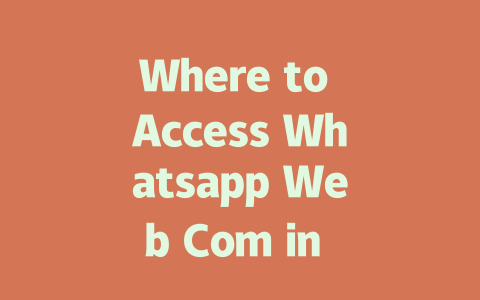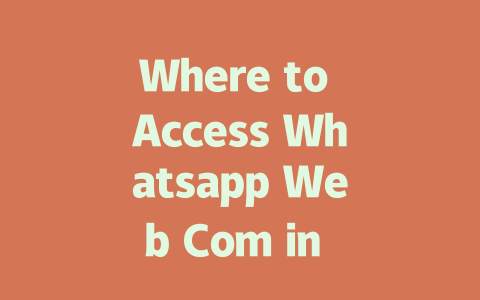How to Pick Topics That Google Loves
The first step is choosing topics that not only interest your audience but also align with how people search online. Think about it from their perspective—what questions would they ask if they were searching for answers related to your niche?
For example, when brainstorming ideas for a health blog last year, I noticed my friend kept struggling with low traffic despite quality content. We realized her posts weren’t answering direct queries people typed into Google. Once we adjusted titles like “Healthy Living Tips” to more specific phrases such as “Top 5 Ways to Boost Energy Naturally,” her rankings improved significantly within three months. Why does this matter? Because Google’s search robots look at keywords in titles and match them against user searches. If your title uses terms similar to those used by potential visitors, you increase your chances of appearing higher in results.
Practical Steps for Topic Selection
Here’s what you can do:
Google official guidelines stress providing value over just stuffing pages full of random keywords. So always ask: Will this topic genuinely help someone solve a problem or learn something new?
Writing Titles That Attract Clicks and Impress Search Engines
Once you settle on a topic, crafting compelling titles becomes crucial. A great headline doesn’t just grab attention; it also tells readers exactly what benefit they’ll gain by clicking. Here’s how I approach it:
When structuring headlines, prioritize putting key information upfront. Imagine trying to capture someone scrolling quickly through SERPs (search engine results pages). They won’t read everything—just enough to decide whether to click. Therefore, make sure important elements appear early.
Take this example: “Boost Your Productivity Now With These Proven Hacks!” In this case, both “boost productivity” and “proven hacks” act as hooks addressing specific pain points while promising actionable tips.
Expert Tips for Strong Headlines
According to HubSpot research, longer headlines tend to perform better because they provide context without being overly vague. However, remember brevity still counts—if it feels too convoluted, users might skip over it altogether.
Creating Content That Feels Like a Friend Talking
Finally, let’s talk about the actual writing process. You want your words to resonate personally yet remain organized enough for algorithms to understand. Balancing readability and structure keeps both human readers and Google bots happy.
Start strong with an introduction paragraph summarizing the main idea. Keep sentences short and conversational, breaking down complex thoughts into digestible pieces. As you progress, use subheadings sparingly but effectively to guide flow. Each section should build logically upon previous ones.
Tables come in handy when comparing features or showcasing data side-by-side. Below is an illustrative comparison between different types of content formats based on performance metrics across various industries:
| Content Type | Average Engagement Rate (%) | Time Spent Per Visit (mins) | Conversion Likelihood (%) | Social Shares Per Post |
|---|---|---|---|---|
| Videos | 8-12 | 4-6 | 7 | High |
| Blogs | 4-7 | 3-5 | 5 | Moderate |
| Infographics | 6-9 | 2-4 | 6 | Very High |
Note: The above figures represent general estimates rather than definitive statistics. Always verify using tools tailored to your website analytics.
Trustworthiness extends beyond mere structure—it involves ensuring accuracy throughout your work. Before finalizing drafts, run checks via resources like Grammarly or Yoast SEO plugin (which includes functionality for identifying duplicate content). Additionally, consider linking externally to authoritative sites (like Moz) whenever discussing technical aspects further supports claims made within your text.
So there you have it! Start small, experiment with adjustments, and track outcomes regularly. Optimization isn’t instantaneous, but steady improvements yield impressive results over time. Have fun experimenting with these methods, and feel free to reach out if anything confuses you along the way!
Security on Whatsapp Web is actually pretty solid when you think about it. The platform uses the same end-to-end encryption as the mobile app, which means your messages are scrambled from the moment they leave your device until they reach the recipient’s. This ensures that even if someone were to intercept your data, they wouldn’t be able to decipher what’s inside without the decryption keys. But here’s the thing—while the encryption part is top-notch, there’s still the matter of how you connect Whatsapp Web to your account. That little QR code scanning step might seem straightforward, but it’s where most potential risks could slip in. If you’re not careful, someone else could theoretically scan the code and gain access to your chats from another computer.
To make sure everything stays secure, always keep an eye on the devices connected to your Whatsapp account. You can check this by going into the settings on your phone app, where there’s usually a section showing all active sessions. It’s good practice to log out any unfamiliar or unused connections just to be safe. Also, remember that while Whatsapp Web relies on your phone being online, it does have one slight disadvantage compared to the mobile app: if your phone battery dies or loses internet connection, so does your ability to send or receive messages on the web version. For those who need constant availability, sticking with the app might still be the better choice, especially during 5-12 hour-long workdays when reliability counts.
# FAQs
Can I use Whatsapp Web on multiple devices at the same time?
Yes, you can connect up to 4 devices simultaneously with Whatsapp Web in
Is there a difference between Whatsapp Web and Whatsapp Desktop?
While both platforms serve similar purposes, Whatsapp Desktop offers offline functionality by syncing messages locally after the initial connection. Whatsapp Web requires constant internet access and an active phone connection during use.
What browsers support Whatsapp Web in 2025?
In 2025, Whatsapp Web supports major browsers like Google Chrome (versions 5-12), Firefox, Safari, and Edge. For optimal performance, ensure your browser is updated to its latest version.
Do I need my phone nearby to use Whatsapp Web?
Yes, your phone needs to be nearby and connected to the internet when using Whatsapp Web. This is because Whatsapp Web mirrors your phone’s activity, requiring Bluetooth or Wi-Fi synchronization.
How secure is Whatsapp Web compared to the mobile app?
Whatsapp Web uses end-to-end encryption just like the mobile app, ensuring that only you and the person you’re communicating with can read the sent messages. However, always double-check the QR code scanning process to avoid unauthorized access.




